Posts Tagged ‘martyrdom’
Friday, July 6th, 2012 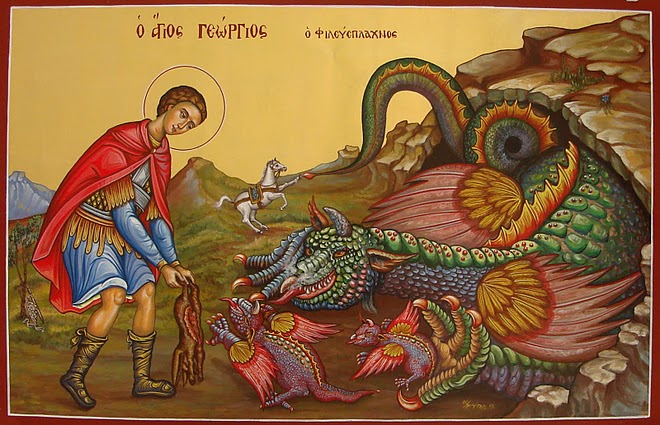
Saint George is one of the most venerated Orthodox Christian saints in the Eastern Orthodox Church. My interest in saint George is cause of the reason, I myself bear the name Georgi (the Bulgarian equivalent of George). Saint George is mostly venerated in the Slavonic Christian-dome.In almost all Church icons depicting st. George in Orthodox and Roman Catholic christiandome saint George is piercing killing a dragon.
One of the reasons, st. George is depicted piercing the dragon is a reference of st. George victory over satan, through his martyrdom.
The Beast (Dragon) on the iconi is a straight reference to the Holy Bible; Chapter Revelation also known under the name Apocalypse.
In revelation, we read humanity and our saviour Jesus Christ will finally once and for all will kill the "ancient beast" = (satan)
In same logic, as Saint Martyr George has been victorious over Satan by his unshakable confession of faith in Jesus Christ in early 5th century A.D. , we believe in the Orthodox Church he is given the crown of (eternal) life as a prize for bearing un-human tortures in the name of the of Christ.
To illustrate visually the victory of saint George over Satan through his immesurable faith confession with which he become, there is a an early tradition in iconography in the Church to depict st. George killing a dragon.
The other reason why saint George is depicted to kill a Dragon is due to a Lebanon / Palestinian ancient story saying; There was a huge Dragon living somewhere in nowdays Lebanon / Palestinian lands.
The beast created a huge havoc killing many people and systematically torturing people in the area.
As the Eastern Orthodox Christian tradition continues …. the Dragon is said to have inhabited one of the caves near some village.
Interesting, the story tells these very same dragon was the last Dragon crawling the earth before the final disappearance of dragons.
Many brave local people tried to kill the beast but many died as the beast was unbeatable.
Being unable to beat-up the dragon with a physical (human) force the local population turnted to God for help – saying continously prayers to Saint George to help them defeat their dragon mischief.
Soon after, Saint George appeared on a white horse and pierced the "old dragon / snake". The dragon liberation miracle is said to be evidenced by local people and according to Orthodox monk books is one of the many great miracles occuring in past times.
The report of the miracle has quickly spread around all Lebanon / Palestinian lands and soon, being confirmed as real spread along all Russia as well as the rest of the Slavonic and Orthodox Christian world (Bulgaria, Serbia), Greece, Egypt (Alexandria) etc..
To illustrate saint George's appearance miracle, monastic iconographers started depicting saint George as we see him until this very day – Riding a horse and slaughtering a monstrous beast.
Below are seven 12-th century early icons of saint Saint Great-Martyr George killing the dragon;;
I've collected the icons from various website online. Hope this collection will be blessing for all Christ brother and sisters and generally anyone reading this post:
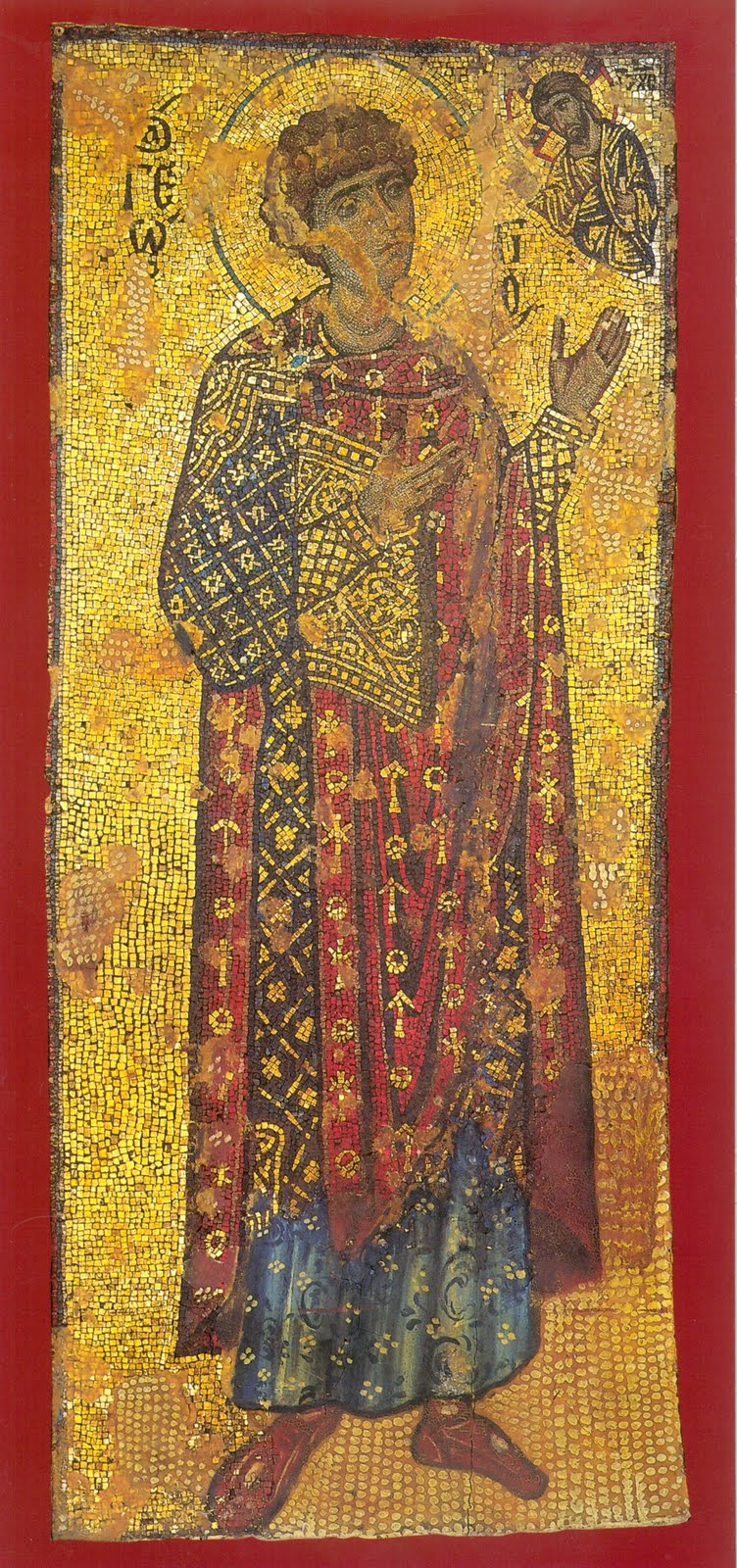
12-th century mosaic icon of st. George the Great Martyr Xenophontos Monastery
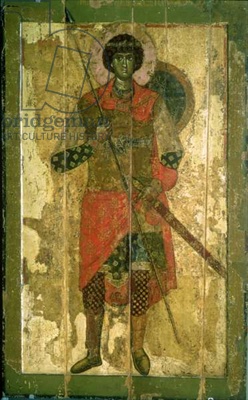
Orthodox Christian icon saint George dated to 1130 – 1150 A.D.
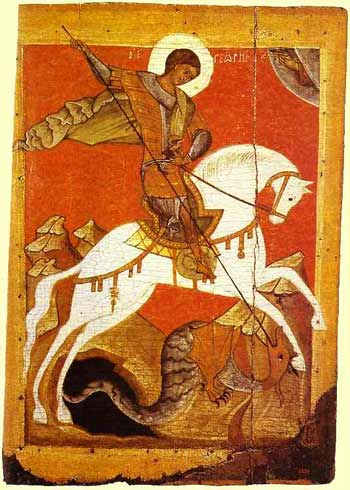
Saint Georgius the Dragon Slayer icon XII century orth icon
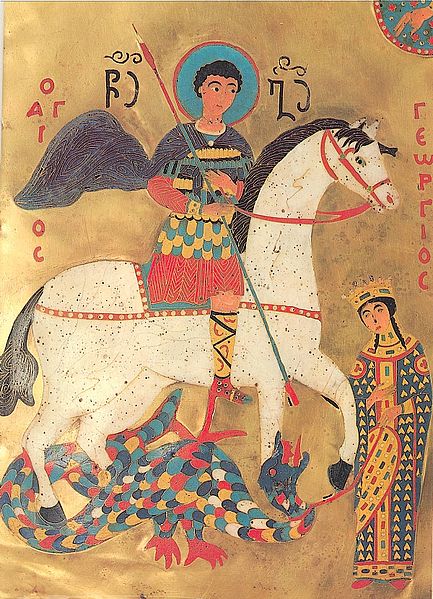
St. George Enamel icon Georgia 12th century
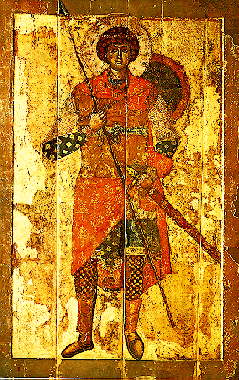
saint George Christian icon Yuriev Monastery Novgorod 12th century
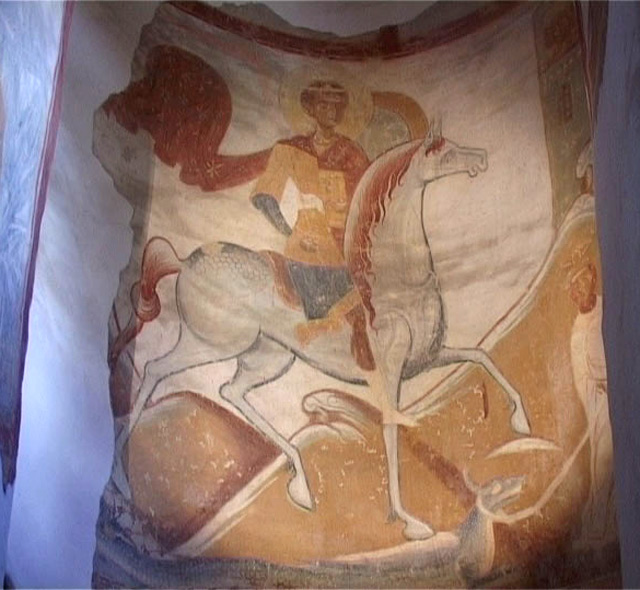
st. George Staraya Ladoga Orthodox Christian icon
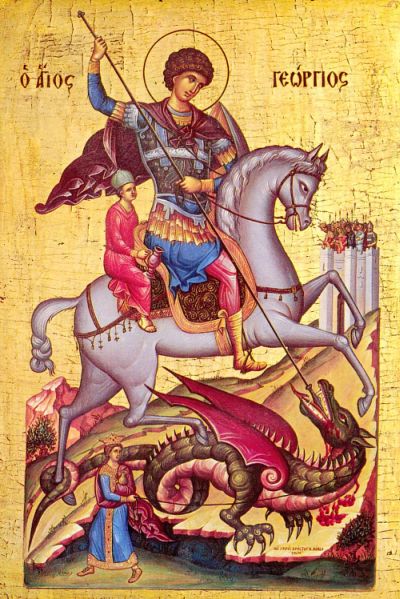
sv. Georgius 12th century Aios
Nowdays saint George Holy Relics particles are kept for veneration in many Orthodox Christian countries monasteries. Here in Bulgaria saint George Holy Relics are kept in a Monastery nearby the seacoast in Pomorie. Any Christian visiting Bulgaria have the opportunity to venerate the Holy in (Pomorie's Monastery – St. Great Martyr Georgi.
Tags: ancient beast, Auto, beast, bible chapter, Catholic, cause, christiandome, church icons, confession of faith, Draft, drago, dragon, eastern orthodox church, eternal life, faith confession, georgi, Georgius, havoc, help, holy bible, interest, jesus christ, kill, last, last dragon, Lebanon Palestinian, martyr george, martyrdom, miracles, Monastery, monk, nowdays, orthodox christian saints, orthodox christian tradition, palestinian lands, pomorie, quot, reading, reason, relics, report, revelation, Roman, Saint George, satan, saviour, saviour jesus christ, st george, story, tortures, victory, village
Posted in Christianity, Various | 1 Comment »
Thursday, May 6th, 2010 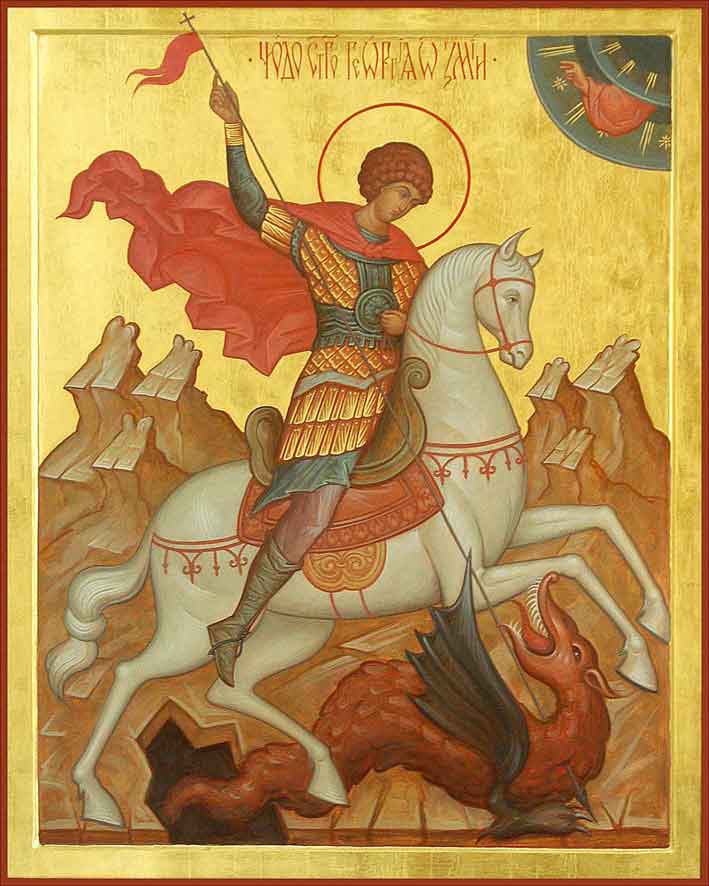
I’m in pomorie monastery right now. Pityle pomorie’s monastery’s website can only be accessed in Russian and Bulgarian language.
Pomorie Monastery is named after the greatly honoured saint George, he is highy honoured here in Bulgaria as well as in many countries in the orthodox christian world, he is also venerated in some other non-orthodox countries one of which for instance is England.
Some of the monks here in the monastery used to say it’s St. George himself who invited me to the monastery for a blessing since I myself am named after the saint.
Many people from Pomorie and near Burgas’s region and even from afar are gathered to commemorate St. George’s Martyrdom and celebrate the Saint George’s day . It’s the second time I’m in Pomorie’s monastery which by the way is a Male monastery. I’m really happy that such a cloisters still exists in this troubles times in sense of spirituality.
The place is really peaceful and the fact that it’s georgraphically located near the sea makes it a must see destination if you’re visiting Bulgaria or travelling through the country.
The history of the monastery is also very interesting. Currently the brotherhood includes 6 monks. The monastery abbot is a really kind and gentle man and the brothers are united in comparison to the observed dividement between monks walking the way of salvation in spiritual abbeys nowadays.
The main reason people are coming on the feast of st. George is to beg for the prayer intercession of the Saint for us the sinners in front of God, that God has mercy and forgies our trespasses and have mercy on us.
Each eart Saint George takes place here in Bulgaria on Sixth of May (06.05) and is one of the greatest christian as well as secular celebrations in Bulgaria. The 6th of Many is also an official holidays within the country and the official feast of the bulgarian army.
St. George is considered one of the greatest Christian saints in the Orthodox, world and even more venerated in Bulgaria.
It’s a common practice in Bulgaria as well as in Greece that spiritual abbeys or Churches are named after St. George.
What makes St. George even more special for us the fact that the Bulgarian Orthodox Church possesses a whole monastery named after st. George located in Mounth Athos. You can read more about St. George (Zograf) Bulgarian Monastery located in Mount Athos here
St. George’s monastery in Mount Athos is named Zograf after a miraculous icon located in the Monastery which dates back to the 14th century.
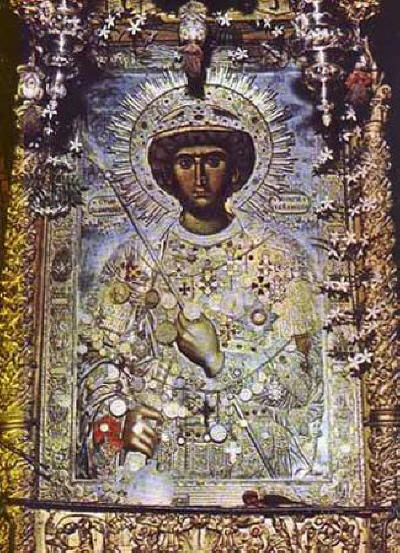
Saint George Zograf Miraculous icon owned by Zograf’s Monastery – Holy Mount Athos
The Holy Lord has completed many miracles through the icon of st. George Zograf. Many people received physical or spiritual healing, whilst others has received according to their prayers when they approached the icon as great relic to honour God.An interesting fact is that Pomorie Monastery also possesses a great relic a miraculous icon of st. George
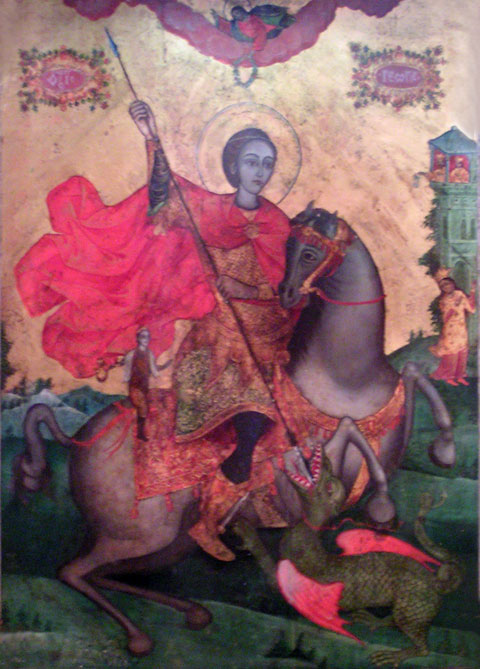
a miraculous icon of St. George Pomorie
In the center of Pomorie Monastery is located a Holy Fountain St. George. The wholy history of the monastery is related to the Holy Fountain.
According to bulgarian orthodox church tradition the Monastery was established by a Turkish bey in the 13th or 14th century. In that time the bay got an incurable sickness. He tried everything a man could try to get a relief or a cure. He went to a physician, he tried herbs, he tried going and praying to Allah in the mosque an imam praied over him to beg for Allah’s blessing and healing etc …
But nothing helped. One night the bey had a dream that a holy fountain is springing out of his house yard.
When he awoke from his sleep he went and digged on the same place where the holy spring has emerged. And oh miracle ! A spring emerged. He drinked from the water and got healed from his illness.
In the pit where he digged he found an image of St. George which is currently embedded in one of the walls of the tower of the holy spring in Pomorie’s monastery.
Afterwards the bey according to God’s revelation to establish Pomorie’s Monastery while all his family members accepted monastic life.
The bey has give away all hid possesseions (land, money) etc. to the monastery just established.
In the years since then the monastery has been destroyed once and rebuilt, many people has received a relief or healing while drinking from the Holy Fountain.
This year God has blessed the monstery even more abundantly. The abbot and one of the monks has temporary taken some Saint remains and brough them for pilgrimage in the monastery.
The saint remains are of St. John Chrysostom , St. Gregory the Theologian , st. Gregory Palamas
Some of the other relics which are available for pilgrimage in Pomorie monastery until 10th of May are st. remains of Glinsk elder hermits as well as
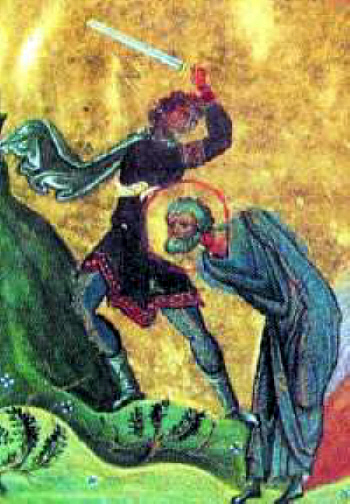
St. martyr Dasius who was tortured and slained here in Bulgaria for his faith in our Lord and Saviour Jesus Christ.
Tags: brotherhood, bulgarian army, bulgarian language, bulgarian orthodox church, burgas, cloisters, eart, feast, gentle man, george s day, healing, icon, martyrdom, Monastery, Monks, official holidays, orthodox church tradition, place, pomorie, Pomorie Monastery, prayer intercession, relief, Saint George Zograf Miraculous, second time, spiritual, st george, trespasses
Posted in Christianity | 1 Comment »
Sunday, June 6th, 2010 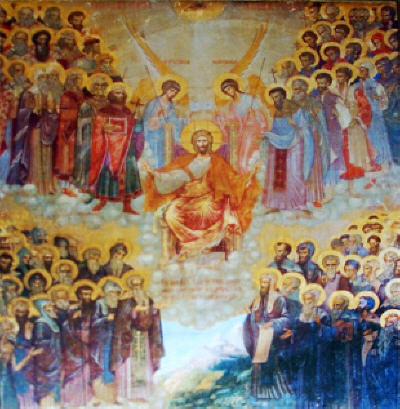
Today it’s the Sunday in which we the Bulgarian Orthodox Christians celebrate The Day of All the Bulgarian Saints
We have plenty of saints in our Bulgarian Christian history, many known and even more unknown ones. That feast is actually one of the greatest local church commemoration of the Christian saints who gave their life for the building, growing and preventing of the orthodox bulgarian church and the orthodox christian faith througout Bulgaria’s lands.
An almost complete list of the orthodox bulgarian saints can be seen here
However many are not mentioned since there are no historical documents about the countless victims (martyrs) of Ottoman muslics who were beheaded or violently killed because of his refusal to accept the Islam.
Here I will just mention few of the saints that are mostly venerated in the realm of the bulgarian orthodox christian faith:
1. st. Enravota (Prince Boyan)
is considered the first Bulgarian Saint martyr who gave his life to show hthe truthfulness of the Christian Orthodox faith.
His most notable speak is also a prophecy concerning the bulgarian orthodox church which was made before his martyrdom for Christ.
The prophecy saint Enravota has made about the Christianity establishment in Bulgaria is as follows:
This faith, which I now die for, will spread and increase across the whole Bulgarian land, although you may wish to oppress it with my death. In any case, the Sign of Christ will establish itself and churches of God will be built everywhere and pure priests will serve the pure God and will deliver “sacrifice of praise and confession” to the invigorating Trinity. Idols, and priests as well, and their ungodly temples, will crumble and will turn into nothing, as if they had not existed. Besides, you alone (to Malamir), after many years, will cast away your ungodly soul without receiving anything in reward for your cruelty.
2. St. Jonh of Rila (wonderworker) was a hermit in the Rila mountain who is a patron saint of the Bulgarian Orthodox Church. He is notable for his great spiritual purity achievement in his anchoretic life. Many miracles and healing has been received by people who has prayed and asked the saint to intercede in their behalf to God. He is known as the first bulgarian monk, and as an initiator of the first bulgarian orthodox christian monastery.
His uncorruptable body is found for pilgrimage until this very day in the monastery he became a founder of Rila Monastery .
2. St. Brothers Cyril and Methodius Who were the saint brothers who venerated for enlightening the slavonic nations with writting letters. They’re actually the inventors of the old Bulgarian also known as Old Church Slavonic. They and their followers were the first to translate the holy bible into the newly created language – the Old Bulgarian.
3. st. Knyaz (King) Boris-Mihail (Boris-Michael) . He is known for his baptism of the Bulgarian Nation and the initiator of the creation of the Bulgarian Orthodox Church as well as a brilliant statesman.
After baptising most of the bulgarian intelligentia and rooting up the Orthodox Christian faith in Bulgaria, he abdicted voluntery from his throne, leaving his son (Vladimir) to rule Bulgaria and started a voluntery monastic life in poverty.
When his governing son tried to reinforce back the old pagan bulgarian Tengriism belief (e.g. the belief in Tangra (Tengri) he left the monastery took back the power (defeating his son) and blinded Vladimir.
Then he returned back to the monastery and spend his remaining life as a monk.
4. st. Clement of Ohrid was one of the Seven Bulgarian Apostles
Born in 840, a Slav from southern Macedonia, he established a monastery at Okhrida and a bishopric at Velica not far away. He is regarded as the founder of this primatial see and the first Slav to become a bishop.
His extensive apostolate took the form of education of the clergy and of the laity, to whom he preached a series of sermons in Slavonic, suitable for neophytes and explaining the principal feasts of the liturgical year. Clement died at Okhrida on 27 July 916.
5. St. Nahum ucceeded St. Clement of Ohrid as bishop. Converted in Moravia by Cyril and Methodius, he journeyed with them to Rome and helped them with their translations into the vernacular: he is venerated in Russia as well as Bulgaria. Other companions of Clement called Sava and Angelar are also venerated with him. In different times and different places they all contributed to the fulfilment of the missionary plans of Cyril and Methodius.
6. Saint Zlata of Meglen has endured a martyrdom for Christ. She refused to accept muslim faith and has firmly confessed her Orhtodox Christian faith.
She was given many chances to accept muslim faith by some Turks and therefore save her life but she refused and was cast into a prison for 3 months flogging until her blood soacked the ground.
Finally, they suspended her upside down and lit a fire, to suffocate her with the smoke; but God was with Zlata, and gave her strength in suffering.
At last they hanged her from a tree and cut her into small pieces. Thus, this brave virgin gave her soul up to God, and went to dwell in Paradise on October 13, 1796. Pieces of her relics were taken by Christians to their homes for a blessing.
7. 26 Martyrs of the Zographou Monastery on Mt. Athos at the hands of the Crusaders they have endured martyrdom for Christ, from the Roman Catholic Crusaders. Though the were warned that the enemies of Christ are coming to the Zograph Monastery they refused to leave the place and was burned alive by the unpious Crusaders.
There is many others to be mentioned but I neither have the knowledge nor I’m worthy to speak about them.
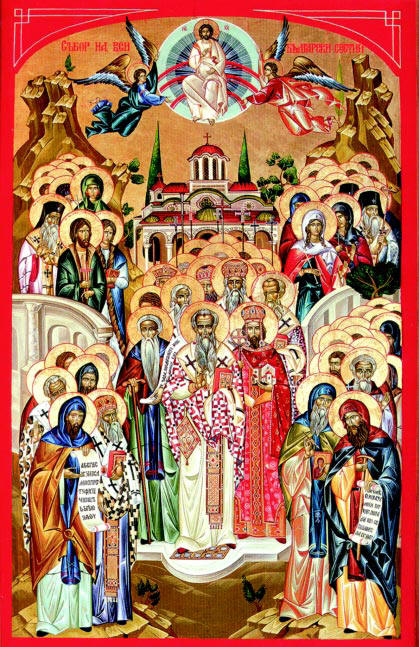
Let by their Holy Prayers God have mercy on us the sinners.
Tags: bishop, boyan, bulgarian orthodox church, cast away, christian history, christian orthodox faith, christian saints, Christianity, churches of god, commemoration, countless victims, Enravota, feast, founder, historical documents, Idols, local church, Malamir, martyr, martyrdom, martyrs, Monastery, monastic life, monk, muslim, muslim faith, Ohrid, Old, orthodox christian faith, ottoman, prophecy, realm, refusal, Rila, sacrifice, sacrifice of praise, Saints, son, The Celebration of the day of All Bulgarian Church in the Bulgarian Orthodox Church, througout, Trinity, truthfulness, voluntery
Posted in Christianity | 2 Comments »
Friday, October 24th, 2014 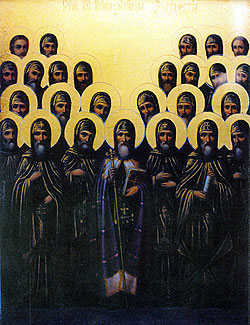
On
23 October (10 of October in Julian Calendar every year in Zograph Monastery in Holy Mount Athos is celebrated the martyrdom of the 26 Martyrs who were martyed by Latin crusaders in October 10, 1280. The
26 martyrs were burned alive after refusal to accept Union with the Roman Catholic Church as ordered by
Byzantine emperor Michael VIII Paleologos. The then wanting to secure his throne emperor gave allowance for Crusaders together with his mercenaries Tatars and and Turks to go and “convert” the Orthodox Slavs to accept the union with the pope who wanted a primacy in the Church.
Mt. Athos stood in firm opposition to the Union. The Athonite monks sent a letter to Michael pointing out that the primacy of the Pope, his commemoration in the churches, celebrating the Eucharist with unleavened bread, the insertion of the “filioque” [“and from the Son”] into the Creed, could not be accepted by Orthodox, and they asked the emperor to change his mind. “We clearly see,” the letter said, “that you are becoming a heretic, but we implore you to forsake all this and abide in the teachings that were handed down to you…. Reject the unholy and novel teachings of a false knowledge, speculations, and additions to the Faith.”
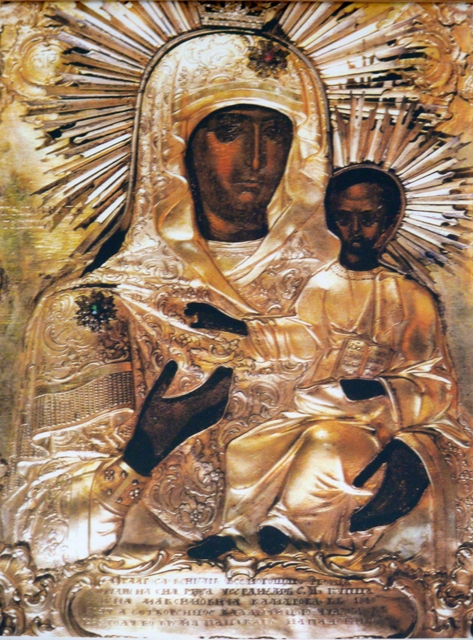 Holy Theotokos – The Virgin Mary icon which spoke with a human voice to a Zographou monk
Holy Theotokos – The Virgin Mary icon which spoke with a human voice to a Zographou monk An icon spoke to an old monk warning that the “enemies of Christ” are coming. The monk went to forewarn the brothers (as he was living 30 minutes afar in a grave-yard), but for his surprise the Holy icon of the Theotokos which spoke to him was found on the monastic entrance.
The brother went and told the abbot (Igumen) Thomas who told to the brothers to either flew in the woods if they’re weak in spirit and to the strong he said to stay and cofess the Holy Orthodox faith. Abbot Thomas together with the 23 monks (24 monks including the abbot) toghet with 4 pilgrims decided to stay in the monastery and suffered martyrdom. The Crusaders who were returning from Jerusalem sent by the ungodly emperor tried to convince the 26 confessors to accept Roman Catholic doctrines such as “filioque” (The teaching that the Holy Spirit cames also from the Son) and to celebrate the eucharist with unleavened bread (like the Jewish) and wanted the confessors to accept the papal union accepted also by the emeror Michael. The 26 Martyrs rebuked these heresies and explained that the “filique” is against the decisions of the 7 Church Councils. Also they give the proof that the Holy Spirit doesn’t proceed from the Son by retelling how John The Baptist baptized Christ and how the Holy Spirit descent over the Lord Jesus Christ in form of a dove. This didn’t convince the papists and the truthful words of the Zographus monks rebuked their error the papists were angered and burned the tower with the holy Martyrs alive. One of the monks fall of the burning tower and the latin though he is dead left him behind however he survived more 30 days! – even though he was on a dying bed and later told what happened to the brothers which came from their hiding places to the monastery. The Holy Martyrs prayed from the fire their last prayer to God to save the Holy Mount Athos and every true Christian on earth from heresies. When they ended their prayer they heard a voice from heaven “Rejoice for great is your reward in heaven!”. The Roman Crusaders heard the voice and were scared howeveras their spiritual eyes were darkened by the lack of the Grace of the Holy Spirit, they kept in their heart tightening. The Martyrdom happened according to Greek chronicles on 10 of October 1280.
The names of the Martyrs for Christ were as follows:
Igumen Thomas, and the monks Barsanuphius, Cyril, Michael, Simon, Hilarion, James, Job, Cyprian, Sava, Jacob, Martinian, Cosmas, Sergius, Menas, Joasaph, Joannicius, Paul, Anthony, Euthymius, Dometian, Parthenius, and four laymen.
The tower building where the holy martyrs were burned was partially kept even though the fire until 1874 however the tower was already too old and it was about to ruin – that’s why it hadto be destroyed. To preserve the memory about the martyrdom of 26 martyrs all brothers of the Zographou monastry decided in one spirit to build on its place a monument.
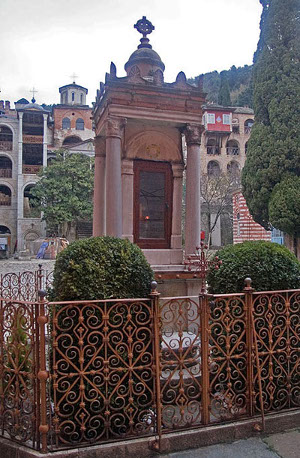
This happened the same year 1873. The monument had to be sanctified on the day when the memory of the martyrs is celebrated at the eve after sunrise began a night vigil. The night was moonless and on the heaven one could see only few stars. All around was silence. During the vigil exactly in midnight, after beginning the living and martyrdom of the the holy Zographos martyrs”, above the church all 600 hundred people saw a fire column. Column lighted up the whole monastery and the whole region with such a bright light, that even the small objects in the monastery could be seen. This divine column stayed over the Church for 3-4 minutes and moved and stayed above the monument for 3-4 minutes more and after that started ascending above and formed a ring like a crown, crowning the place where the holy martyrs suffered.
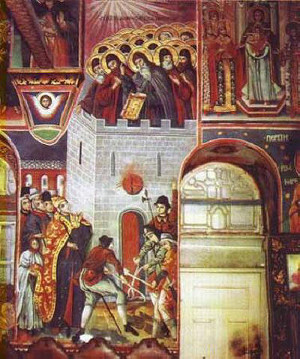
This unusual event continued for about 15 minutes. An eyesights of the miracle were all the brotherhood, guests and hermits who came from nearby Sketes for the feast.
That’s how the Almight God has shown by this miracle omen showing in front of everybody how Godly was the martyrdom of this great confessors of the true faith and loyalty to the Holy Orthodox Church.
Holy 26 Martyrs and Cofessors of the true faith pray the Lord Jesus Christ to save our souls!
Tags: bread, holy spirit, letter, lord jesus christ, martyrdom, memory, miracle, night vigil, October, place, prayer, true faith, Union, voice, year
Posted in Christianity, Everyday Life, Various | 5 Comments »
Monday, April 2nd, 2012 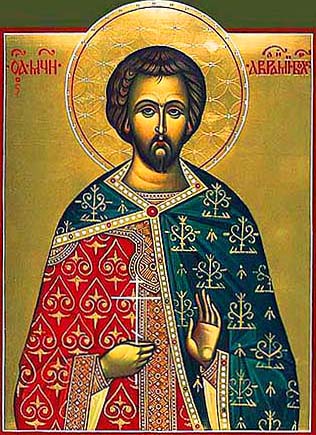
Saint Abraham the Bulgarian is an Orthodox Christian saint venerated across most Slavonic Christian dome. His co-memoration in the Bulgarian Orthodox Church (BPC) is on 1st of April.
What is unique about this saint is that he used to be born and grown in the tradition of the Muslim (Islam) faith and by the great providence of God he converted to the true faith of Christianity.
St. Abraham of (Bulgaria), was born in Volga Bulgaria in a community of Muslim Volga Bulgars (old Bulgarians). Nowdays Volga Bulgaria is located in Tararstan Russia. The saint used to be an islamic merchant and His martyrdom for Christ happened in March 6 (according to old Church Calendar) in year 1229.
He used to live in a very complex situation, when the islamic influence of Arabs in his motherland was quite severe. St. Abraham of Bulgaria used to be a rich man for his time, he was a merchant.
Because of the trade he travelled a lot to the Byzantine Empire and the Orthodox Christian principalities. This give him an opportunity to get to know Christian faith little by little.
He was accustomed to a wordly life but still always accepted strangers and similar to the Old Testamental father of nations st. Abraham he's been very hospitable to poor people.
By Gods grace he become convinced Muslim faith does not teach a true faith to the one God, being pointed by God himself towards the right salvation way, he accepted Jesus Christ as a Lord and Saviour being baptized and hence converting to the truthful Christian faith.
His Christian baptizmal was accepted from Russian traders, who lived nearby the place of Great Bulgar.
Being baptized in the Christian faith Saint Abraham of Bulgaria not only confessed Christian faith across his fellow people, but he also led very harsh (ascetic like) life, wearing secretly below his clothes a heavy chains during his worldly travels. The profit he made from trade often he shared with the poor.Once he went for a trade to the city of Great (Bulgar) Bulgar. There he was arrested because there was a rumor, he cursed (islamic faith believed prophect) Mohammed and the muslim faith.
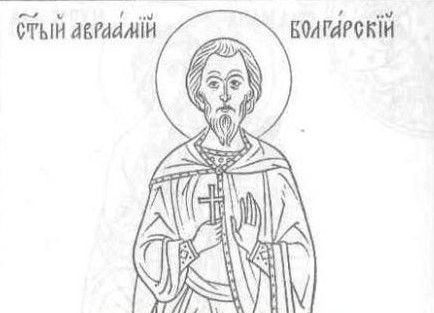
Muslims catched him and started convincing him to reject Christ, accusing him at a blasphemy. Abraham was not scared of muslim threats of expel and even putting to death. As Muslims failed to force him "by words" to convert back to Islam, they took him and put him in jail because of his denial of (their) Islamic faith.
In jail he was tortured but, they failed to convince him to deny Christ, seeing they have no way to convince him to accept Muslim faith once again, saint tormentors first cut his hands, then the legs and finally disgraced by his boldness and continues confession of Christ they beheaded him.
Soon afterwards the city of Bulgar was captured and burned down by the Mongols, many people in that time saw this is Gods punishment for the innocent shed blood of Abraham the Bulgar.
The local Christians took his body and buried him in the Christian cemetery of the ancient city of (Bolgar) / Bulgar.
On the place, where the saint was buried, a healing water spring emerged. The first man who received healing from this spring by Christ's grace was a muslim.
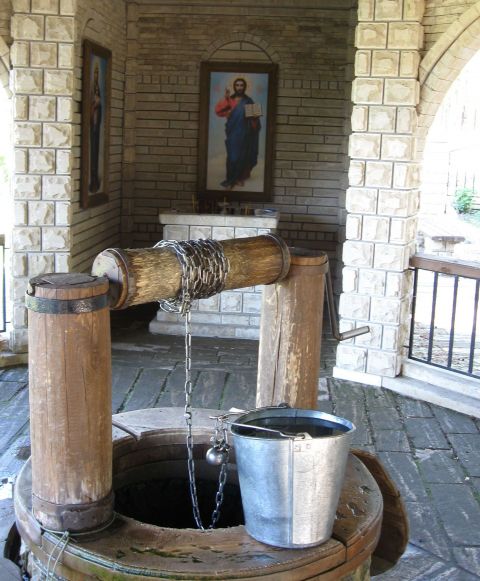
Great healing miracles happened on the saint grave. Local Christians took their relatives and bring them to the saints grave for a miracle healing and a prayer intercession of the saint. A rumour about the saints great graceous grave quickly spread and some people told about the miracle healing grave f st. Abraham to prince Georgi / (George) Vsevolodich.One year later again on 6th March 1230, the body of the saint was carried in the city of Vladimir, where the prince and his family, the Vladimirsk Bishop, the clergy and the local people received the holy relics of st. Abraham (of Bulgaria). The holy relics was kept in the local church "Dormition of Mother Mary" on 6th of March in the year of 1230.
The co-memoration of st. Abraham the Bulgarian is being observed in the Bulgarian Orthodox Church, since very ancient times.
Nowdays both Christians and Muslim celebrate the saints feast.
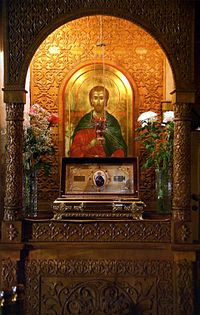
Interesgingly, nowdays St. Abraham the Bulgarian is venerated as a saint by both Orthodox Christians and by Muslims. Many Muslims from Turkey and other muslim countries come each year for the saints feast day to pray and ask for healing or prayer intercession to God.
Even to this very day people receive by Jesus's grace through saint Abraham the Bulgarian's prayers – a various incurable disease healings. The healings occur on the same holy spring where the saint was buried. Many people are also healed from incurrable diseases through the veneration of the incorruptable saint holy relics kept in the Church Dormition of Mother Mary.
Tags: Auto, body, bpc, bulgar, bulgarian orthodox church, bulgarians, byzantine empire, christian faith, church calendar, city, day, death, Dormition, Draft, feast, fellow, grace, heavy chains, intercession, Islam, islam faith, islamic influence, Lord, lot, martyrdom, mother, motherland, muslim, muslim faith, muslim islam, natiosn, nbsp, nowdays, Old, one god, place, prophect, quot, rumor, russian traders, saviour, time, true faith, true god, volga bulgaria, volga bulgars, year
Posted in Christianity, Various | No Comments »
Tuesday, December 27th, 2011 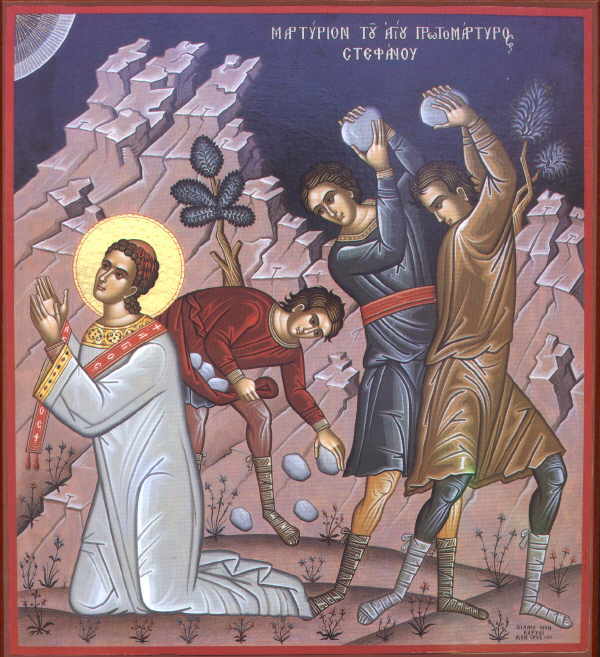
It is 27th of December, the 3rd day of Christmas and in those day in the Bulgarian Orthodox Church we co-memorate saint Stephen's Martyrdom.
Its a well known fact that by his martyrdom Saint Stephen become the first Christian martyr
Stephen's name etymology comes from Greek (Stephanos) and translated means "Crown".
What we know from Orthodox Church's tradition is that Stephen was a very young in his age of Martyrdom probably in his 20s.
Stephen's glorious martyrdom has inspired and strengthened significantly the early seveerly hunted Church and has give a lot of courage and faith to many of our early Saint Martyrs. These early Church saints now incesently pray to God to have mercy on our earthly Church.
Its not much known fact St. Stephen held a rank in the early Church clergy, he was a HieroDeacon.
Hierodeaconism in our church is considered the maximum rank of deaconship one can have just before he is ordained for a Priest.
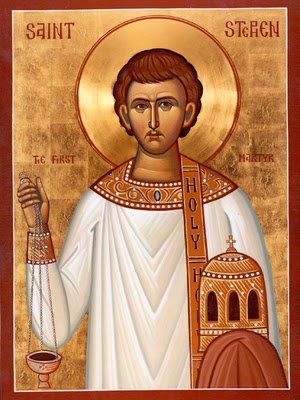
St. Stephen was burning for love in Christ and had a strong faith in God, turning many Jewish to our Lord and Saviour Jesus Christ. He has shown the truth way to many by teaching them, how to properly interpret the Old Testament (Ancient Jewish) writtings.
He explained to many jewish, how all the old scriptures testify about the coming of the Messiah (Christ), which will save all who believe in his name from sins hell damnation.
As Jewish looked for ways to shutter any kind of preaching of the Gospel and kill Christianity, they saw Stephen as a big enemy just like all Christians in those early days. Therefore they looked for ways to accuse him and execute them and end up the large numbers of jewish people converting from Jewism to Christianity
The whole story of stoning (execution) of st. Stephen is described in the Holy Scriptures in the book called Acts of the Apostles
As he was about to die, Stephen looked up to heaven and said;
"Behold, I see the heavens opened, and the Son of man standing at the right hand of God."
Then, as he was being stoned, he cried out, "Lord Jesus, receive my spirit.".Our Beloved saints last words were, "Lord, do not hold this sin against them." manifesting his saintship and deep Christ love even during his last moments of earthly living.
St. Stephen is celebrated in almost all West Roman Catholic Church and in Anglicans.
Churches who co-mmemorate the great saint are located in all around the world.
St. Stephen is also considered a patron saint of Republika Sprska (Bosnia and Herzegovina)
Stephen's name later probably become the origin name for western's so popular Steven name).
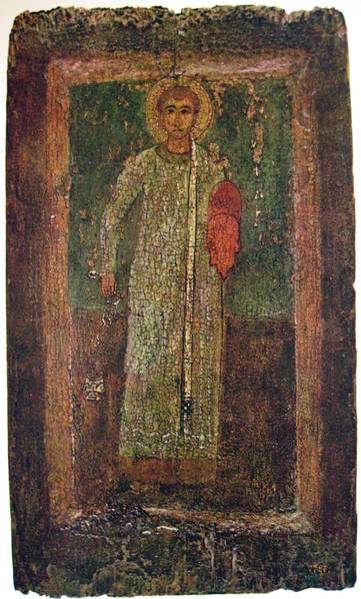
Saint Stephen's Byzantine Icon from the 11th Century
Let by the Holy Prayers of St. Stephen God have mercy on the Church and increase our faith and mercies to us sinners.
Tags: acts of the apostles, age, age of martyrdom, Behold, bulgarian orthodox church, ChristianityThe, church, courage, Crown, damnation, day, faith in god, feast, feast of saint stephen, first christian martyr, glorious martyrdom, Holy, holy scriptures, jewism, large numbers, lot, love, martyrdom, martyrs, Maximum, maximum rank, messiah, name etymology, Old, old testament, pray, quot, rank, saviour jesus christ, shutter, son, stephanos, story, strong faith, testament, writtings
Posted in Christianity | 1 Comment »
Sunday, April 3rd, 2011 Today the 3rd of April in the Patrierchal Cathedral Saint Alexander Nevski in Sofia, the Bulgarian Church has officially canonized the martyrs from Batak and Novo Selo.
The Holy Liturgy in Saint Alexander Nevski that’s been held in the st. Alexander Nevski (Largest Cathedral Church in Bulgaria) has been led by the his All Holiness the Patriarch of Bulgaria Maxim.
The holy liturgy canonization has been also transmitted live in the Bulgarian National Television.
The canonization itself took place right in the end of the Holy Liturgy.
Where the bulgarian leading clergy (bishops, metropolitans archimandrites, the Patriarch himself) has officially announced the decision of The Bulgarian Church Holy Synod to Canonize the Martyrs, who had endured martyrship for Christ in Batak and Novo Selo villages during the April’s Bulgarian liberation revolt in May 1876.
The martyrdom and the all the surrounding events that occured has also been widely known in the Bulgarian history under the name The Batak’s Slaughtering / (Batashko Klane as we call it in Bulgarian)
The mini liberation revolt has been extinguished by Ahmed Aga Barutanliqta in the brutal blood-bath according to different historical estimations the murders done by The Turkish mayor Ahmed Aga had been in the range of in between 1750 and 5000 people most of which were an innocent peasants who had voluntary agreed to left behind all their weapons and surrender to the Turkish bashi-bozluk.
Most of the martyrdom of the newly canonized martyrs has happened in the Church “Holy Sunday”
Therein in this Church the terrible blood bath occured. The about 200 peasent, martyrs had stood in the Church for a three days, the turkish has digged small holes in the Church walls and shooted through them to kill them, a fire and gas has been used to kill as many as possible, many of the killed martyrs has been little children with their mothers.
The Turkish soldiers (beasts) couldn’t enter the Church because the Church was so filled with layman that the people were pressing the Church doors.
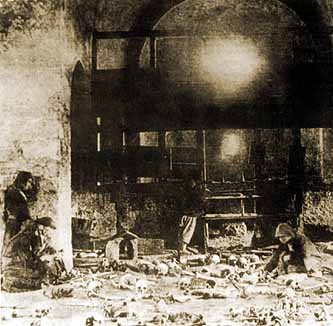
The peasent martyrs had no water in the Church, so they used the float light (icon-lamps) as a drinking liquid and blood of their dead brothers and sisters as a water substitute. The Bashi-bozouk Ahmed Aga ordered that beehives are let in the Church to sting the Martyrs as well as burning straw soaked with gas was throw in stifle the poor peasents.
On the third day all that left alive, went out of the Church, when they found out they’re doomed if they stay in.
All the Batak peasents that rejected to accept the Islam have been beheaded, this are the same saints which has publicly been announced by God’s providence to be venerated as a Church martyr saints Many of the young bulgarian mothers and girls, who have left the Church had been brutally raped and then slaughtered for their faith in Christ.
The Batak blood bath and martyrdom has been so severe and shocking that it horrifyed all Western Europe, Russia and America.
Here is another picture taken in Batak after the brutal butcheries, it depicts the widow wife of the initiator of the revolutionary rebellion
, stading near a writting in cyrilic made of bones reading Remains of 1876 .
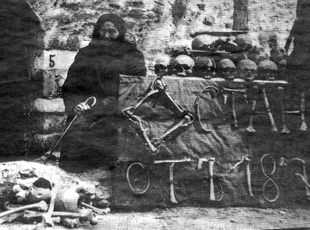
A while after the Martyrdom of the saints in Batak, the turkish army tried to withold the information about the brutal killings, which were absolutely inacceptable for the 19th century.
They tried to burn the Stone Church where they did their bestiality but without any success by God’s providence, next the turkish bashi-bozluks tried to hide about the butchery by burying many of the dead bodies and re-painted the Church laws, however as a miracle of God very soon the martyrs blood which sprinked up the Church laws has appeared on the laws.
A Pilgrim of the newly canonized martyrs could see still the blood of the martyrs preserved there on the Church laws and see the big numbers of relics of the slaughtered martyrs.
Here is the stub used to behead the Batak’s martyrs which is now kept in the Bulgarian National Museum:
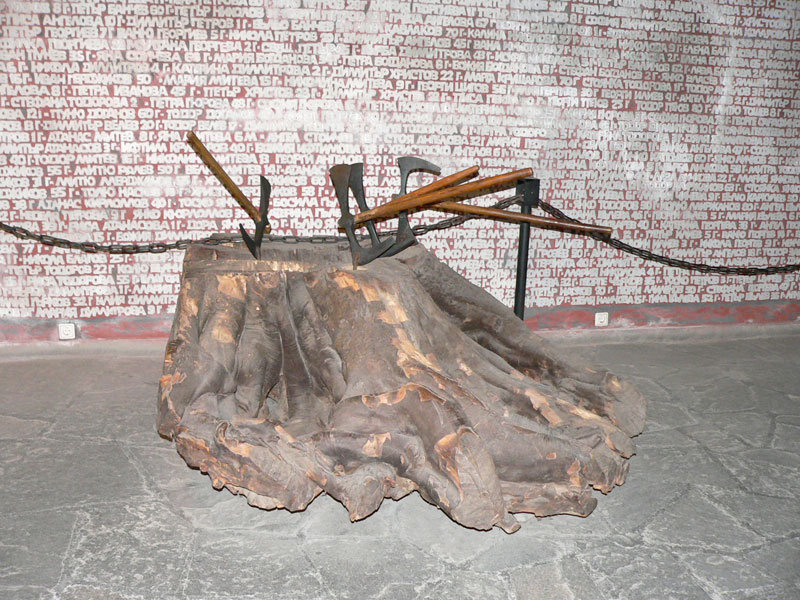
The other martyrs which were canonized on the great feast for our Bulgarian Church were brutally killed 8 nuns in a Novo Selo’s nunnery, they endured martyrdom again in 1876, the Novo Selo (a nearby village).
The newly canonized saints is the last canonization that occured in the Bulgarian Orthodox Church since the canonization in the distant year 1964 when the Church decided to canonize (venerate as a saint) saint Sofronii Vrachanski (st. Sophronius from Vratsa)
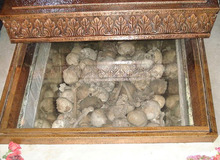
During the Holy Liturgy, an icons presenting the Batak martyrs and the Novo Selo martyrs had been consecrated by his all Holiness Maxim Patriach and head of the Bulgarian Orthodox Church.
The Batak and Novo Selo saints day feast in the Bulgarian Orthodox Church will be celebrated each year on the same day as they endured martyrdom 3rd of April.
His Holiness Patriach Maxim is currently aged 96 and is one of the oldest if not the oldest Orthodox Christian patriarch in the worl today!
A Small chunk of the Batak and Novo Selo’s saints Canonization is available for watching on the address http://www.vbox7.com/play:004f8828
The complete number of canonized saints as martyrs in the Bulgarian Orthodox Church is about 700.
On the canonization festive holy liturgy there were Orthodox Christian representatives of the Romanian and the Russian Orthodox Church.
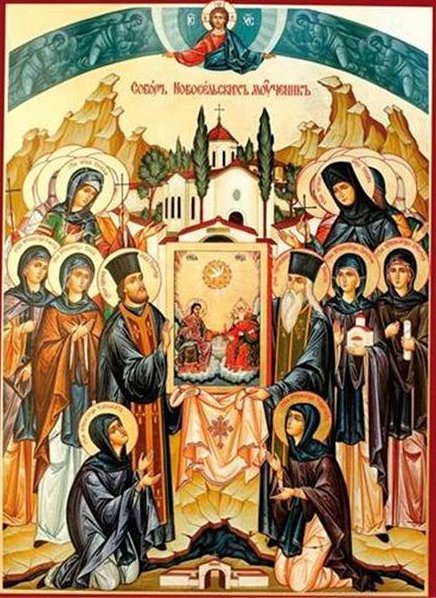
Batak saint Martyrs Icon
I pray that the merciful God (The Holy Trinity), be merciful to all us the Bulgarian Orthodox Christians and all the Orthodox Christians around the world and grant us forgiveness of our sins and our Lord Christ grant us be with him and the Father and The Holy Spirit in paradise, Now and Forever and Ever! Amen
Tags: alexander nevski, bashi, Bashi-bozouk, Batak, blood, blood bath, bulgarian history, bulgarian national television, bulgarian orthodox church, canonization, Cathedral, cathedral church, christian martyrs, church walls, drinking, estimations, float, Holy, holy liturgy, holy synod, Islam, martyrdom, martyrship, mothe, Novo, novo selo, orthodox christian, patriarch, peasent, place, revolt, right, saint alexander, Selo, Slaughtering, sting, straw, substitute
Posted in Christianity | 2 Comments »

![]()
![]()
![]()
![]()
![]()
![]()
![]()

















